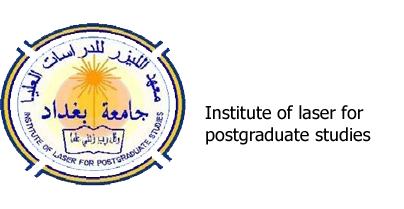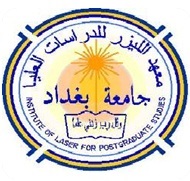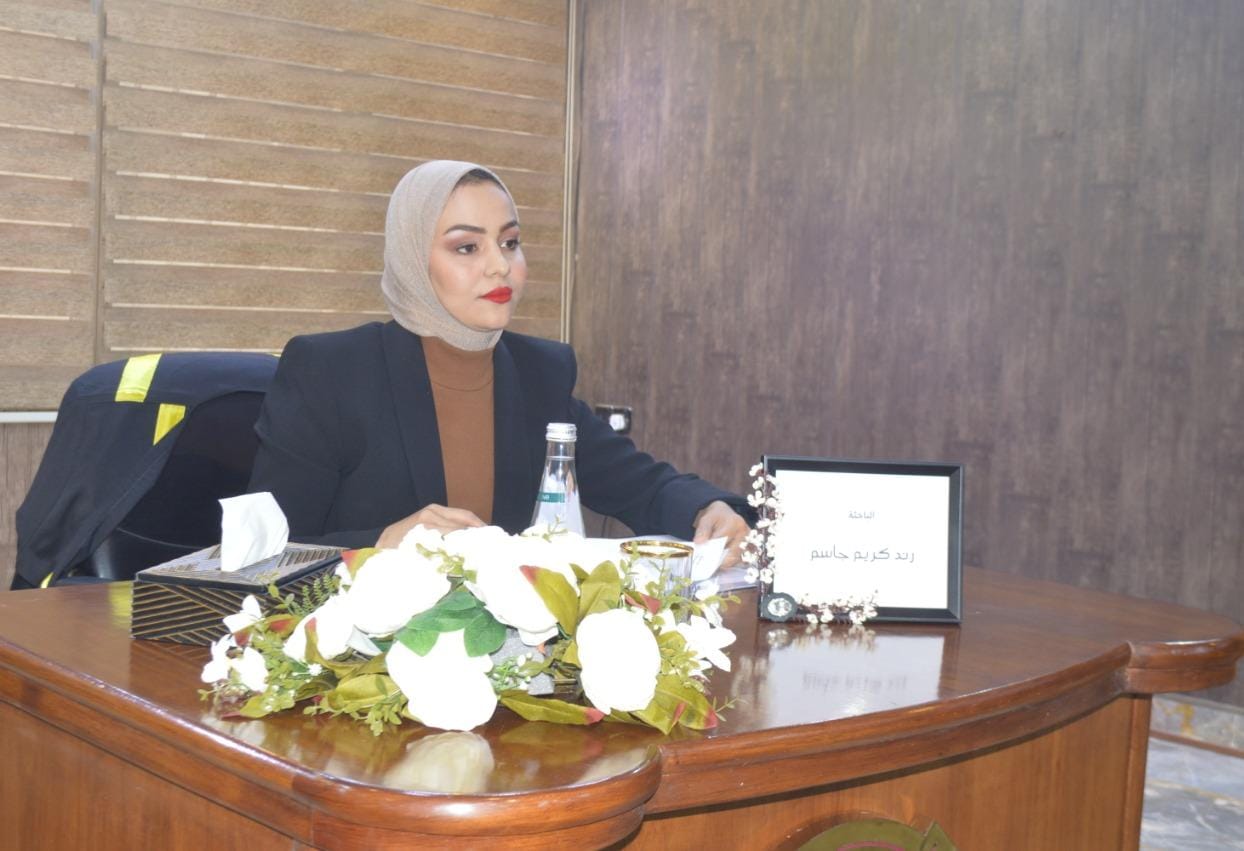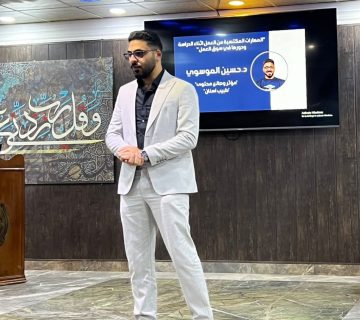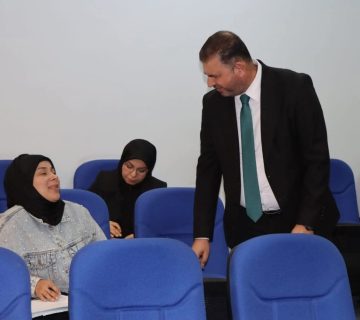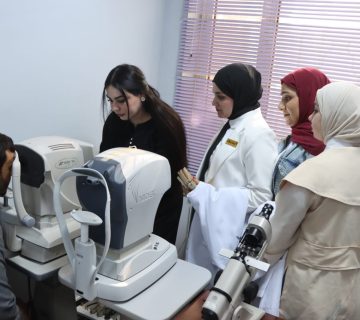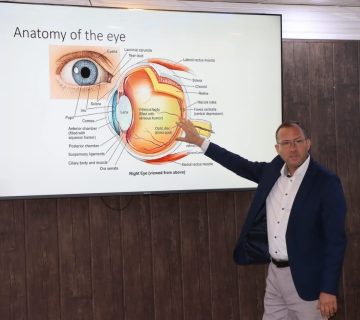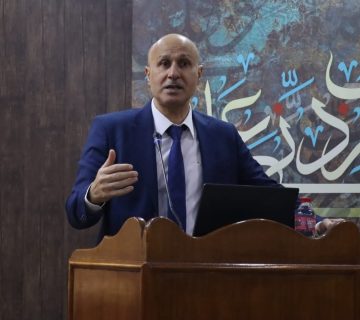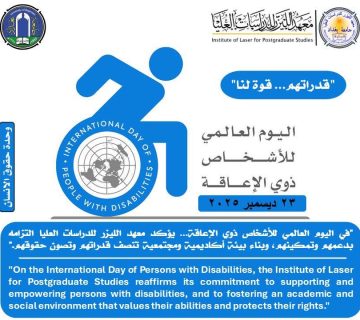The thesis of the master’s student Rand Karim Jassim / Laser Applications / Dentistry was discussed for her entitled study
“Cavity Disinfection using Er, Cr: YSGG Laser by inducing Photo Acoustic streaming”
“Dental cavity disinfection using an erbium chromium laser by induced photo-acoustic flow”.
Where the discussion committee consisted of the professors whose names are listed
1- Prof. Dr. Hussein Faisal Hussein / PhD / Dentistry / Dental Treatment / College of Dentistry / University of Baghdad / Chair person
2- Asst. Prof. Dr. Laila Mohammad Hassan / Ph.D. Laser / biology/ Institute of laser for Postgraduate Studies / University of Baghdad / Member
3 – Inst. Dr. Ali Abbas Shaheed / PhD in laser root fillings / dentistry / Bilad Al-Rafidain University College / member
4- Prof. Dr. Hussein Ali Jawad / Ph.D. in Physics Sciences / Laser / Institute of laser for Postgraduate Studies / University of Baghdad / Member and Supervisor
Where the aim of the study was to study the effect of the Er. CR:YSGG erbium chromium laser in the short pulse duration (60 microseconds) on the number of Streptococcus mutans bacteria in the laboratory.
The idea in this study included,
That the success of restorative treatment can be affected by bacterial residues in the walls of the dental cavity, which may lead to the risk of recurrent caries, so it is recommended to completely remove the infected tissue while preparing the dental cavity.
The study used a total of twenty-eight extracted third molars free from decay, fissures, and other deformities. Both the well agar technique and the dental cavity model were applied in the test materials. Wells of plates previously inoculated with Streptococcus mutans were filled with test material, in order to complete the tests, after a 48-h incubation period, areas of inhibition were assessed using millimetre measurements. For dental cavity model testing, cylindrical cavities were invented in the occlusal surface of the teeth, which was kept planar. The teeth were stored for 72 hours at 37°C in a broth culture of G. mutant bacteria. Then, the teeth were randomly divided into four groups of seven teeth (each group comprising 14 cavity groups). In group A, the experimental cavities were not treated in any way and served as a control. In group B, a chlorhexidine-based cavity disinfectant (CHX) was applied to the experimental cavities for sixty seconds. In group C, an Er.CR:YSGG laser with short pulse duration (60 μs), (0.25 W, 15 Hz, 1% air, 1% water) was used. In the latter group, a chlorhexidine cavity antiseptic was applied for 60 seconds, followed by a 30-second laser treatment with the same parameters previously described. The teeth were stored in saline solution for three days. Record amounts of dentin flakes were obtained from the cavity walls. The number of recovered microorganisms was counted. The teeth were stored in saline solution for three days. Record amounts of dentin flakes were obtained from the cavity walls. The number of recovered microorganisms was counted. The teeth were stored in saline solution for three days. Record amounts of dentin flakes were obtained from the cavity walls. The number of recovered microorganisms was counted.
The result was that the average values of the colony forming unit in the experimental study were: group A yielded (10.4 * 10 ^ 8), while in group B (0.25 W 3.2 * 10 ^ 3), group C (0.50 W = 27.6 * 10 ^ 3), finally, group D (1 watt 296.4 *10 ^3) watts. The result of the experimental study showed that the optimal power of the laser giving maximum inhibition of was 0.25 watts. The result of the study groups obtained (a) 13.14 * 10 ^ 6 +1.74, (b) 3.44 / * 10 ^ 4 + 1.69, (c) 3.54 * 10 ^ 3 + 0.76, (d) 16.00 * 10 ^ 2 + 1.05 . The result of the descriptive and statistical test of colony forming unit (CFU) in the control and experimental groups showed that the highest percentage presented in the control group (a) followed by the chlorhexidine group (b) and the Er.CR:YSGG© laser alone group respectively, the lowest percentage was observed ( Maximum inhibition) in the laser-activated chlorhexidine group (D).
After the statistical test, a significant difference in the diameter of the inhibition zone was observed in group D (26 mm) where both chlorhexidine and laser were used followed by group D (18.71 mm) where chlorhexidine-based cavity disinfectant was used. The least significant difference was observed in group C (10.26 mm) where the laser alone was used.
It was concluded according to this in vitro study, a photon-induced photo-acoustic flux technique that uses an Er,Cr:YSGG pulsed laser in a short pulse duration effectively induces a chlorhexidine-based cavity disinfectant, which results in the inactivation of Streptococcus mutans
Among the most important recommendations of this study were: _
1- Comparison between different chemical disinfectants not used in the study with PIPS technology in inhibiting bacterial activity
2- Comparison between penetration depths of Er, Cr: YSGG Laser and CHX.
3- Technical study. PIPS with another type of laser such as Er.YAG laser.
4- Study the effect of Er, Cr: YSGG laser on tensile micro bond strength when used for cavity disinfection
5- Comparison of the bactericidal effects of H-mode (60 μsec) and S-mode (700 usec) for Er, Cr: YSGG laser
- Studying the effect of PIPS technology on other types of bacteria such as Gram-negative bacteria
- Studying the increase in tooth temperature when we use PIPS technology
The researcher obtained a master’s degree with “excellence” due to her real efforts in preparing the thesis.
